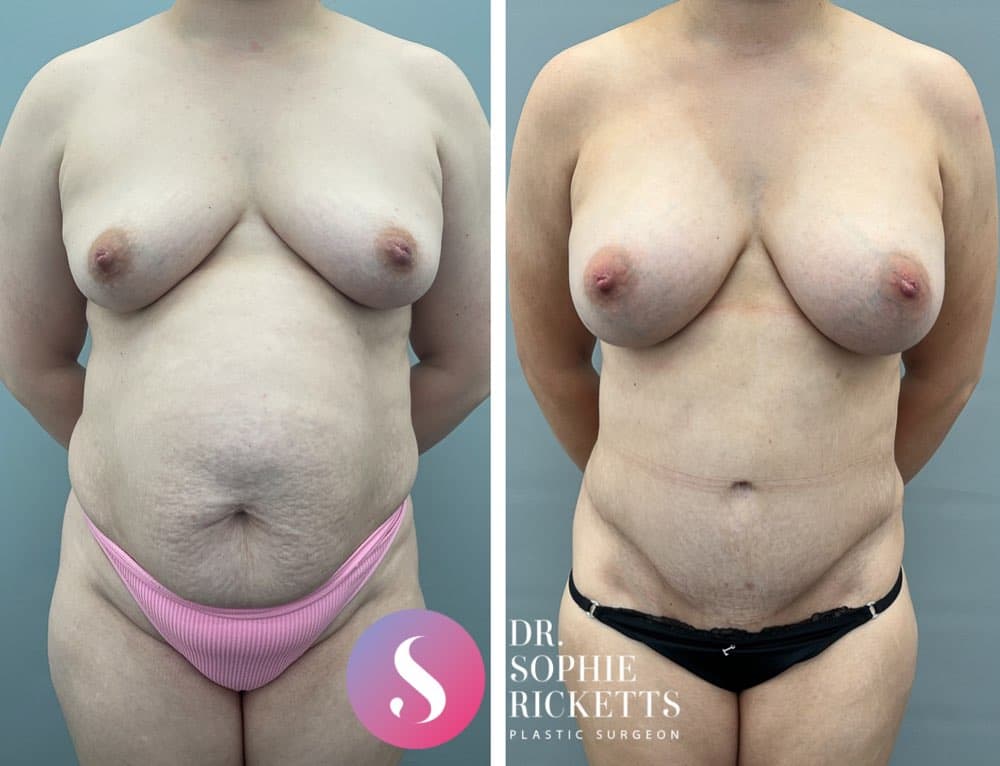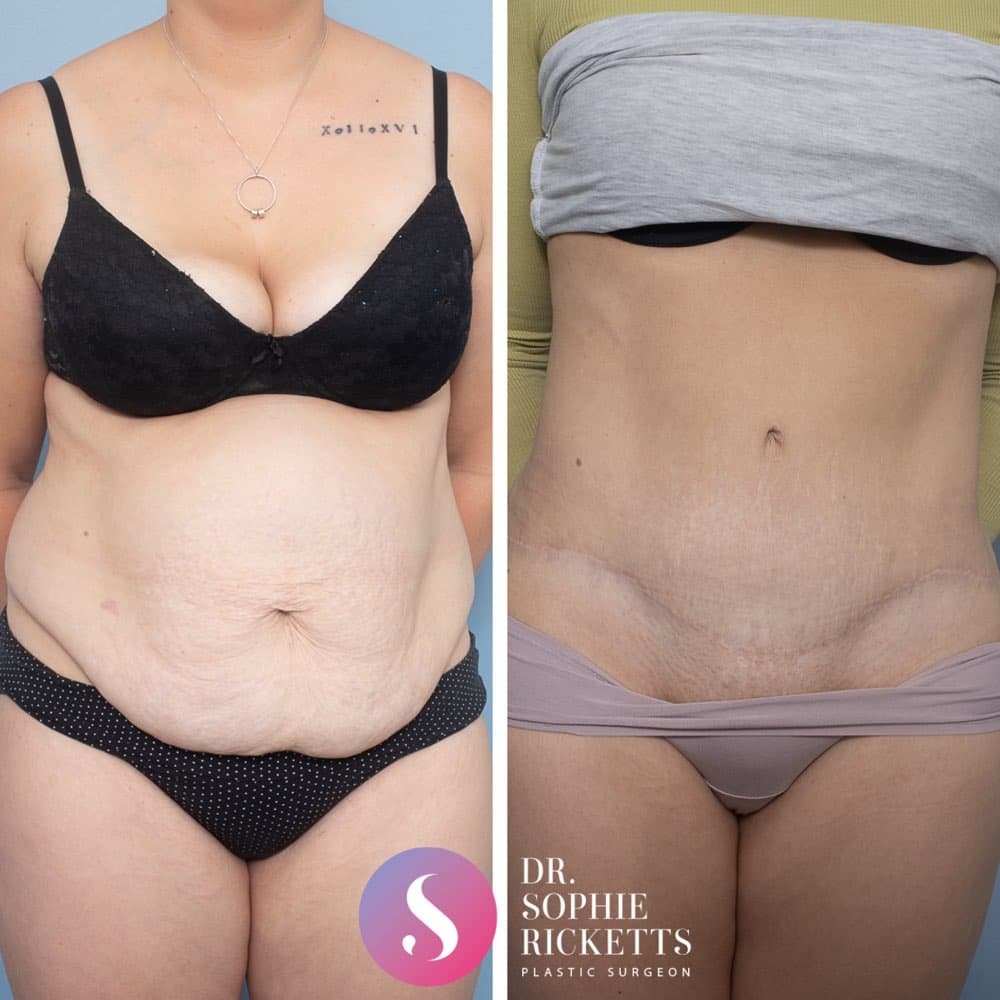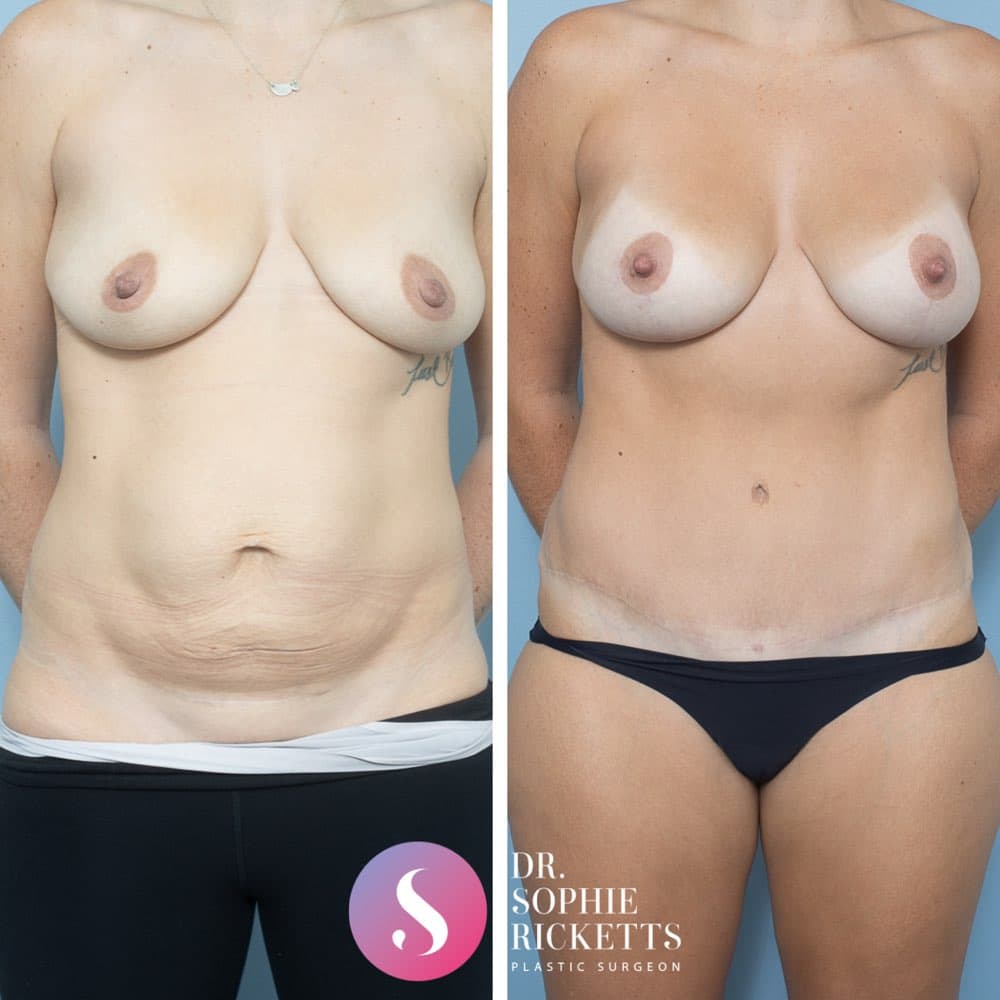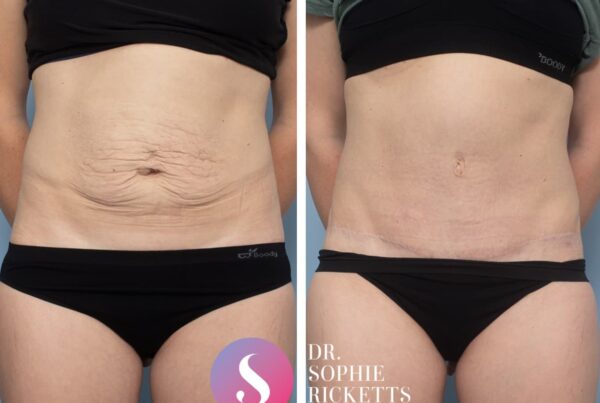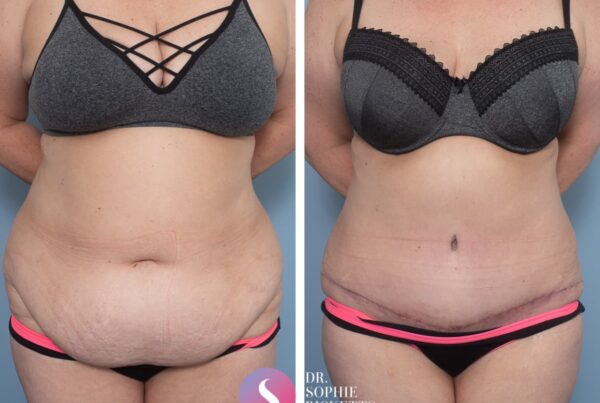Tummy tuck surgery can help you shift the stubborn skin and fat on the abdomen.
Additionally, it helps to tighten the stomach muscles to firm and flatten the front of your stomach and help recreate a waistline.
Who comes for a tummy tuck?
Late in the pregnancy, the skin is stretched beyond its ability to shrink back to its previous shape, and the six-pack muscles are separated in the middle. Once the post-pregnancy weight is lost, a tummy tuck will repair the separation in the stomach muscles and remove the stretched skin that will never shrink, no matter how much exercise you do.
The other group of people who come for a tummy tuck are those who have lost significant amounts of weight. Removing the stretched skin and fat and repairing the stomach muscles goes a long way to alleviating problems of skin rashes, inability to exercise and fit clothing.
Can I have liposuction instead to avoid the scar?
Liposuction only removes fat, not skin, so it is impossible for lipo alone to fix the looseness of the skin and/or muscle separation. The biggest problem with using liposuction inappropriately is leaving excess skin; creating the appearance of a deflated balloon. Liposuction however is frequently used at the time of an abdominoplasty to improve the ‘love-handle’ area and waistline.
How long is recovery?
The hospital stay is one to two nights. You will be able to take care of yourself when you leave the hospital but full recovery is six weeks. The muscle repair needs some time to heal, so you must not lift anything heavier than a kettle of water for this time. So that means no washing baskets, shopping bags or kids! Depending on what sort of work you do you may need anywhere from three weeks (for an office job) to six weeks off (for a job that requires lifting).
“Read my answers on Realself”
Melbourne Tummy Tuck Surgeon
Gallery
FREQUENTLY ASKED QUESTIONS ABOUT ABDOMINOPLASTY
What is the recovery process like?
The recovery process after an abdominoplasty takes a total of about six weeks. After you leave hospital the first week of recovery is all about taking it easy. Your dressings are all waterproof so you can shower over them. You will be provided with a compression garment to wear which helps to reduce swelling and provide support. You should avoid heavy lifting and strenuous exercise for six weeks but you may be able to return to work, drive and resume light exercise by about the third or fourth week depending on your job. It is important to follow your surgeon’s instructions and attend follow-up appointments for tailored instructions to ensure a successful recovery.
What are the risks and complications associated with my procedure?
Like all surgery, an abdominoplasty has potential risks and complications. These complications can be thought of as general or specific. General complications include bleeding, infection, poor wound healing, blood clots in the legs (DVT) and rarely pulmonary embolism. Specific complications include seroma and numbness of the skin below the umbilicus. It’s important to discuss these risks with your surgeon and follow their instructions during recovery to minimise the risk of complications.
How soon after pregnancy can you get an abdominoplasty?
Typically, surgeons advise waiting six months to a year after pregnancy before undergoing a abdominoplasty. This waiting period permits your body to heal fully and enables you to attain your pre-pregnancy weight.
Can abdominoplasty be combined with other procedures?
Yes, abdominoplasty can be combined with other procedures. One of the more common procedures done alongside abdominoplasty is breast surgery (augmentation, lift, or reduction). This combination is common in the post pregnancy patient, and a rectus muscle repair is also done as part of the abdominoplasty. It massive weight loss patients procedures such as brachioplasty (arm lift) or back lift can also be combined. Although less common, we sometimes have patients wishing to combine facial surgery such as eyelids, face lift or rhinoplasty with abdominoplasty. The main motivation in combining procedures is usually to allow a shorter overall down time and recovery. However, the decision to combine procedures should be made in consultation your surgeon.
How long do the results of abdominoplasty last?
Expect the results of your abdominoplasty to be permanent; however, ageing, pregnancy, and weight fluctuations can all have an impact. With proper diet, exercise, and the maintenance of a stable weight, the results can be maintained for many years.
Will there be scarring after abdominoplasty?
Yes, there will be scarring after abdominoplasty, as with any surgical procedure. The extent of scarring can vary depending on the type of abdominoplasty performed (mini, full, extended, circumferential). Typically, the scar will be located along the lower abdomen, from hip to hip as well as around the belly button. The scar will initially appear red but will gradually fade over time. Your plastic surgeon will provide instructions on how to care for your incisions to help minimise scarring, and there are also scar management techniques and products that can further improve the appearance of scars. The good news is an abdominoplasty scar is well hidden below the knicker/bikini line.

